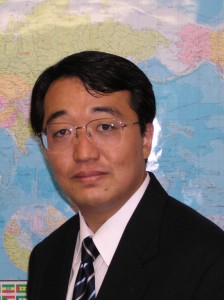緊張と統合:内村鑑三におけるキリスト教と日本の精神
このシリーズでは、私が1994年に執筆した統一神学大学院(Unification Theological Seminary)の神学課程修士論文(Divinity Thesis)を日英二か国語で掲載している。
7.無教会運動の評価の続き
自律と他律を止揚統一したものが、ティリッヒが「神律」と呼ぶものである。神律は絶え間なく、「独立の他律と独立の自律と戦う。」なぜなら、神律的次元を欠いた自律は単なるヒューマニズムに陥り、自律を抑圧する他律は人間の理性を破壊するからである。ティリッヒは、「自律と他律は神律に根ざしており、両者の神律的統合が崩れたときに、それらは逸脱するのである」と言っている。自律の独立性と他律の強制は、新しい神律によってのみ克服され得る。したがって、自律と他律は共に神律の中の要素であり、両者はそこから出て来て、そこに再結合しようとする傾向がある。これがこのトリオの間に働いている力学なのである。
ある意味において、神律の概念はカトリックの聖礼典主義と、如何なる形の偶像崇拝にも抗議するプロテスタント原理の統合を目指したものであった。ティリッヒの主な関心は、聖礼典の権威と個人の宗教体験の自由の間に生ずる葛藤の問題にあったのである。彼は「真のプロテスタント原理において意味されているラディカルな預言者的批判精神は、いかにしてカトリック教会に保存されているような教義、神聖なる律法、聖礼典、聖職者階級制度、儀式などの古典的伝統と結びあわされるのだろうか。」と問いかけるのである。
しかし、神律的文化の理想は、全歴史を貫いている人間の実存的疎外のゆえに、この地上において完全に実現されることは有り得ない。断片的に実現されることがあるのみである。無教会運動は、まさしくこの自律の他律に対する終わりなき戦いであり、また、この世においては完全には実現し得ない神律への希求なのである。おもしろいことに、内村は彼の最も晩年の日記(1929年10月24日)の中において、無教会のもつこの実現不可能な性質について語っている。
無教会主義は此世において実行不可能の主義である。若し実行可能となれば直に教会と成りて実現する。無教会主義の貴さは其実行不可能なるに於てある。
これはエルンスト・キースマンの実存主義的見地からみた教会論に驚くほど似ている。それは「新約聖書の教会に関する教義の統一性と多様性」という彼のエッセイにおいて解明されている。彼は真の教会は歴史の平面や組織的戦略の次元には存在し得ないと確信している。それは本質的に終末論的な所有に留まるのであり、賜物として享受し得るのみであって、決して確実な所有とはならないのである。彼は「教会は地上におけるキリストの王国であり、この王国は常に我々の地上の組織、神学、そして敬虔な実践に先だって存在している。我々はそれに追い付くことは出来ない。それが我々の心をとらえるのであり、我々がそれを求め、それを生き抜き、生き生きとその証しをするように送り出すのである。」と主張する。
VII. Evaluation of the Mukyokai Movement.(Cont.)
The sublation and unification of the autonomy and heteronomy is what Tillich calls “theonomy.” Theonomy constantly resists both “an independent heteronomy and an independent autonomy” because autonomy without the theonomous dimension falls into mere humanism and heteronomy which oppresses autonomy destroys human reason. Tillich states, “Autonomy and heteronomy are rooted in theonomy, and each goes astray when their theonomous unity is broken.”(28) The struggle between the independence of autonomy and coercions of heteronomy can only be overcome through a new theonomy. Hence, autonomy and heteronomy are both elements within theonomy, from which they were derived; and they tend to be reunited in the theonomy again.(29) This is the dynamism of this trio.
In a sense, the concept of theonomy aimed at the unification of Catholic sacramentalism and the Protestant principle of protest against any form of idolatry.(30) Tillich’s main concern was the problem of conflict between sacramental authority and the freedom of individual religious experience. He poses the question, “How can the radicalism of prophetic criticism which is implied in the principles of genuine Protestantism be united with the classical tradition of dogma, sacred law, sacraments, hierarchy, cult, as preserved in the Catholic churches?”(31)
The ideal of theonomous culture, however, can never be fully realized on earth because of man’s existential estrangement that runs through all history. But there may be partial realization.(32) The Mukyokai movement is exactly this never-ending challenge of autonomy against heteronomy; and also a yearning for theonomy which is not completely attainable in this world. Interestingly, Uchimura himself talks about this unattainable nature of the Mukyokai in his latest diary (Oct, 24. 1929):
The non-churchism is an ism which is unattainable in this world. If it is possible to realize, it will immediately realize itself as a church. The preciousness of non-churchism exists in its unattainableness.(33)
This is strikingly similar to Ernst Kasemann’s existentialist perspective of ecclesiology, which is illuminated in his essay, “Unity and multiplication in the New Testament doctrine of the church.” He is convinced that the true Church can exist neither on the historical plane nor at the level of organizational strategy; it remains primarily an eschatological property, to be enjoyed only as a gift, never as an assured possession. He maintains, “For the Church is the kingdom of Christ on earth, and this kingdom is always ahead of our earthly organizations, theologies and devotional practices. We can never catch it up. It captures us and the sends us out to seek it, to live it out, to bear witness to it in fresh ways.” (34)
(28)Ibid., Vol. I, p.85.
(29)Ibid., Vol. III, p.251.
(30)Walter Leibsecht, “Paul Tillich” in A Handbook of Christian Theologians ed. Martin E. Marty & Dean G Peerman (Nashville: Abingdon Press, 1984) p.493.
(31)Paul Tillich, “The Conquest of Intellectual Provincialism: Europe and America,” in Theology of Culture (New York: Oxford University Press, 1959), p.169.
(32)op cit, Tillich, Systematic Theology, Vol. I, p.85.
(33)Uchimura, Nikki Shokan Senshu [Collected Letters and Diary], ed. Taijiro Yamamoto, (Tokyo: Kyo Bun Kwan, 1966), p.358.
(34)Ernst Kasemann, “Unity and Multiplication in the New Testament doctrine of the church” in New Testament Questions of Today, translated by W. J. Montague, (Philadelphia: Fortress Press, 1969), p.257.
